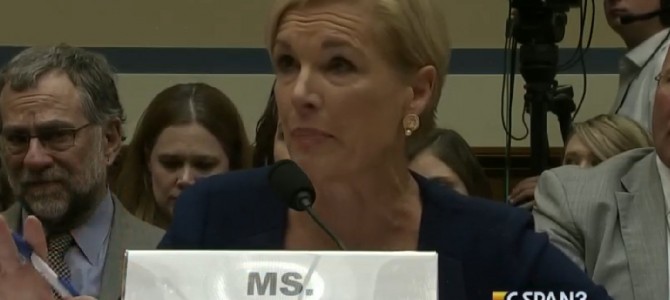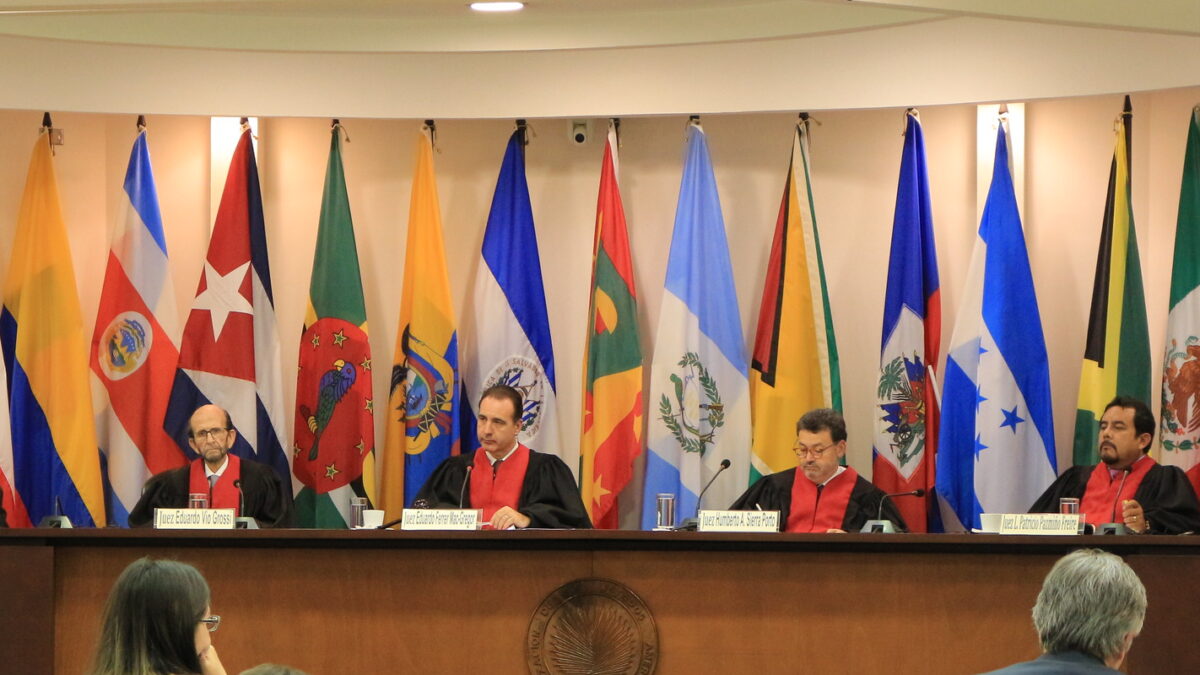
If you followed the political fight over Planned Parenthood last year, you are probably dumber now. An anti-abortion group’s release last summer of a dozen undercover videos of Planned Parenthood executives talking about selling fetal tissue for research led to congressional hearings, state investigations, and failed efforts to deny the group federal funding.
The anniversary of Roe v. Wade Thursday offers us a chance to take stock of how little difference all of that made. The controversy over Planned Parenthood resulted in just about zero productive political conversation between people who disagree about abortion law. It is just a small exaggeration to say no one learned a thing.
It didn’t have to be that way.
The videos caused Democrats and Republicans to retreat to respective ideological corners. Lawmakers in both parties communicated only with their bases. That was no shock. Abortion, more than every other social issue, is an issue lawmakers love to fight over, not legislate on. With Roe v. Wade enshrined, Congress has limited power to change abortion law. Their incentive, on display this week, is to show supporters they agree with them. The point is to fight publicly, not to win.
Videos Like This Don’t Win Hearts
But a cynical approach to the videos was not inevitable. Whether you think the Center for Medical Progress, which created the videos, was heroic or shady in tricking Planned Parenthood officials into embarrassing statements, the fact remains: Their nonchalance about abortion and the sale of fetal tissue should disturb most people.
For that reason, the videos offered a starting point—a chance in Congress and living rooms for political conversations that advance understanding of why the group receives support from some of the population and animosity from another. But that required granting the opposing view some legitimacy. It required acknowledging tradeoffs. We missed that chance. Many share fault.
Critics of abortion wanted the videos to move public opinion in their favor, and push legislatures to increase restrictions on abortion. They should have remembered that the videos motivate, almost exclusively, people who already oppose abortion rights.
Those who support allowing abortion were not swayed, because the videos were presented in a way that makes them easily ignored. A boatload of studies on cognitive dissonance show most people ignore information that conflicts with their existing strongly held views, and look for information that discredits the conflicting view.
Frame It as Immoral, Not Illegal
Seen in that light, abortion critics erred by promoting the relatively weak argument that the videos show Planned Parenthood officials engaged in illegal organ harvesting, rather than unseemly conversation and immoral actions, legal or not. Once defenders of the group decided the claim of illegal activity wasn’t true, they tuned out, dismissing the controversy as a frame job.
The sale of fetal tissue, while outrageous to people who oppose abortion, is easily rationalized by abortion rights advocates. If the fetus died in what they consider a legally defensible procedure, using the tissue for research is morally comparable to organ donation. By relying on edited videos and conservative pundits that abortion rights voters don’t trust, Planned Parenthood critics offered easy excuses to those inclined to dismiss the information by quibbling with the messengers.
Critics of abortion rights might have influenced more people who didn’t agree with them by dialing back moral instruction (“You are flawed if you don’t react as I do to this”) in favor of a request to have their values acknowledged (“Please consider my profound moral objections to the practices depicted here”).
For their part, Democrats and commentators backing Planned Parenthood reacted to the videos by seizing on excuses to avoid talking about the videos’ content. Pundits on the Left focused on presidential candidate Carly Fiorina misleadingly claiming a video depicts “a fully formed fetus on the table, its heart beating, its legs kicking, while someone says we have to keep it alive to harvest its brain.”
Abortion Is a Tradeoff Between Mother and Child
But arguing about what isn’t in the videos is in part a way to avoid talking about what is. Focusing on arguably dicey editing and the less controversial health services Planned Parenthood offers might have its place. But it is a way to avoid grappling with the undeniably difficult fact the videos present: Even if you support women’s right to choose it, abortion involves moral conflict.
Planned Parenthood’s defenders dodged a responsibility to consider the clash of values that their views entail. Their position is that the right of mothers to choose to end pregnancies outweighs the cost, which is the killing of human fetuses, or babies. Abortion foes could acknowledge their alternative cost-benefit calculation. They place a higher value on protecting the unborn than on women’s autonomy over their pregnancies.
You cannot embrace one value without sacrificing the other. You pick. It’s not a pleasant choice for anyone. Yet much political rhetoric reflects an assumption that there is no trade-off involved.
“Defunding a trusted health care provider that serves one in five women in America doesn’t help anyone — in fact, it would hurt hundreds of thousands of people,” Hillary Clinton at a Democratic debate last year. Clinton’s claim naturally drew cheers from watching Democrats. She told them what they wanted to hear. Not only are they right, but there is no conflict to consider. No one loses if Planned Parenthood is funded. It’s easy.
Our Divisions Aren’t Superficial
Such pandering is not just an issue on abortion politics. America’s political discourse is low on tolerance for real, robust pluralism—where serious differences in values are accepted, not attributed to opponents’ stupidity or immorality. Many leaders, most prominently President Obama, regularly engage in phony celebrations of diversity that are actually assertions that Americans should not disagree on anything significant.
“We worship an awesome God in the blue states, and we don’t like federal agents poking around in our libraries in the red states,” Obama said in his famous 2004 Democratic National Convention speech. “We coach Little League in the blue states and, yes, we’ve got some gay friends in the red states.”
What about Americans who don’t worship any God, or lack gay friends? “The future we want,” Obama said in his State of the Union last week, “will only happen if we fix our politics.” What if we don’t agree on the future we want, and that’s what’s breaking our politics?
In the president’s glib view, culture and race are superficial differences that obscure inherent similarity. Religious distinctions, far from being a disagreements over the fate of our souls, are just wrinkles in the way worshippers express their shared faith in God.
This kind of thinking is ubiquitous. “I am attracted women, he’s attracted to men, but we all pine for marriage,” or “I like the Packers and she likes the Bears, but somehow it works” are common sentiments that celebrate trivial differences while actually promoting shared views.
Touting phony diversity and essential sameness makes us less tolerant of real conflicts. If you pretend dating someone who likes another sports team is tolerant, you’ll struggle having a civil conversation about gun laws.
Let’s Just Be Honest about Our Deep Disagreements
This kind of thinking breeds political discourse that is subtly oppressive and completely boring. Americans discuss politics under an unstated rule that we should not disagree when it counts. You can argue about who makes the best barbeque, or maybe even tax policy, but make sure to agree on supporting our troops or gay rights.
Abortion is controversial because it involves a disagreement that is as close to unbridgeable as they come. Because conflict can’t be denied, it could offer our best chance to acknowledge a difference in strongly held views without treating opponents as unworthy humans. It’s a chance to agree to disagree.
The fight over Planned Parenthood represented a failure by many well-meaning people to communicate about a difference in values in a way that abetted mutual understanding and tolerance.
The failure may be business as unusual. But was not necessary—and when you pull back from the screen long enough and consider it, it was very, very sad.









